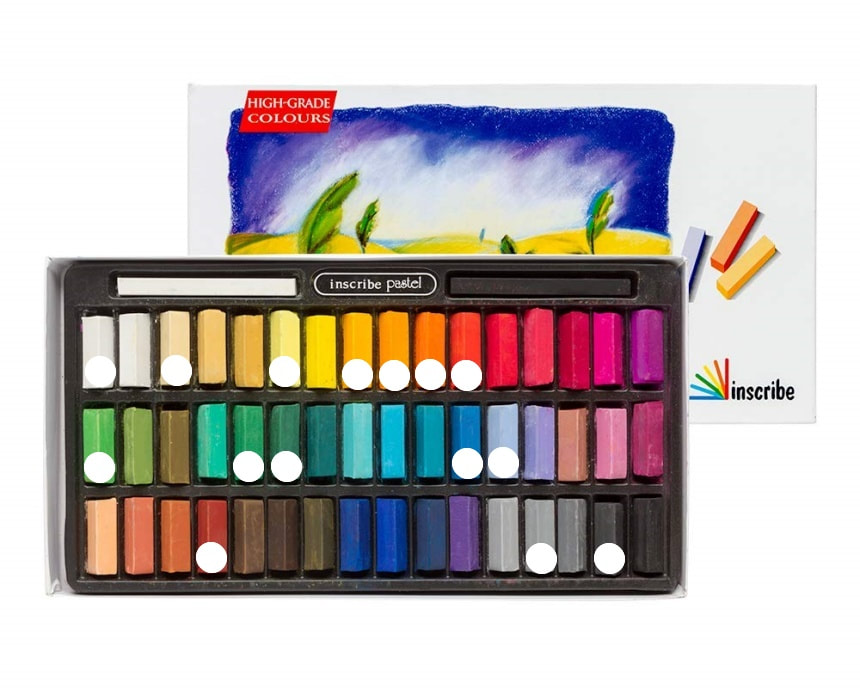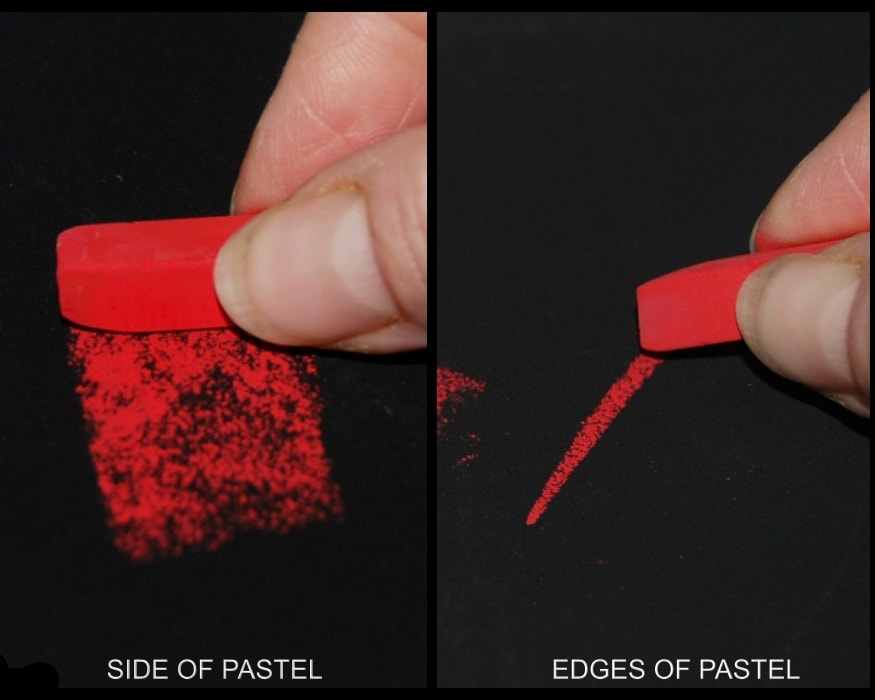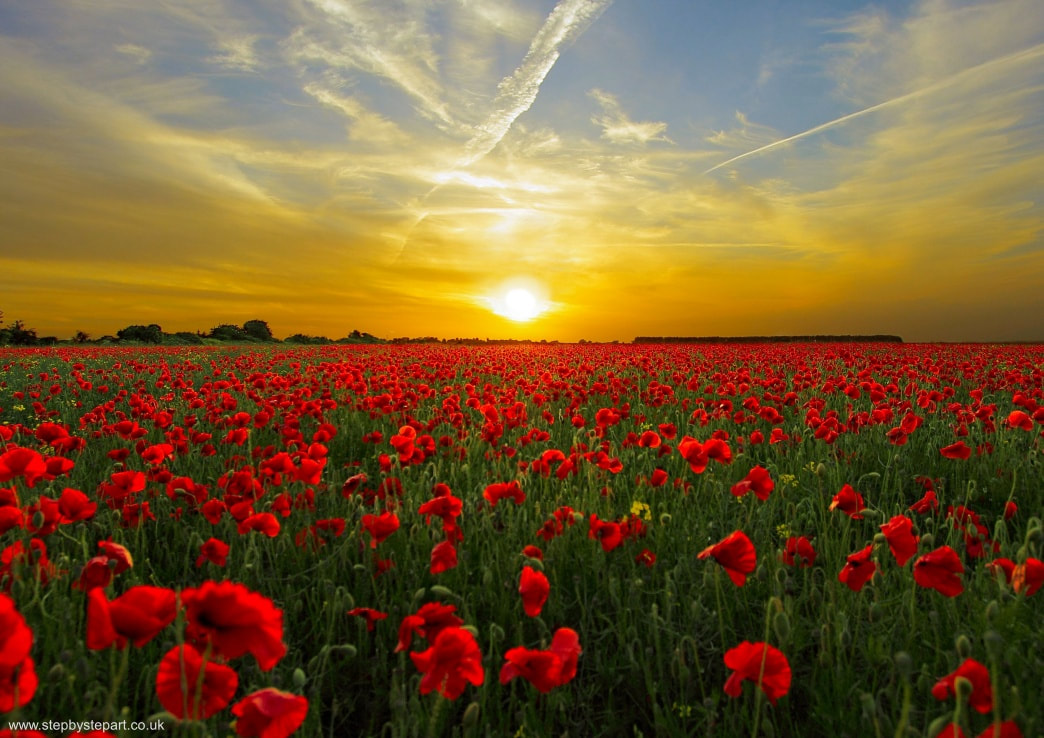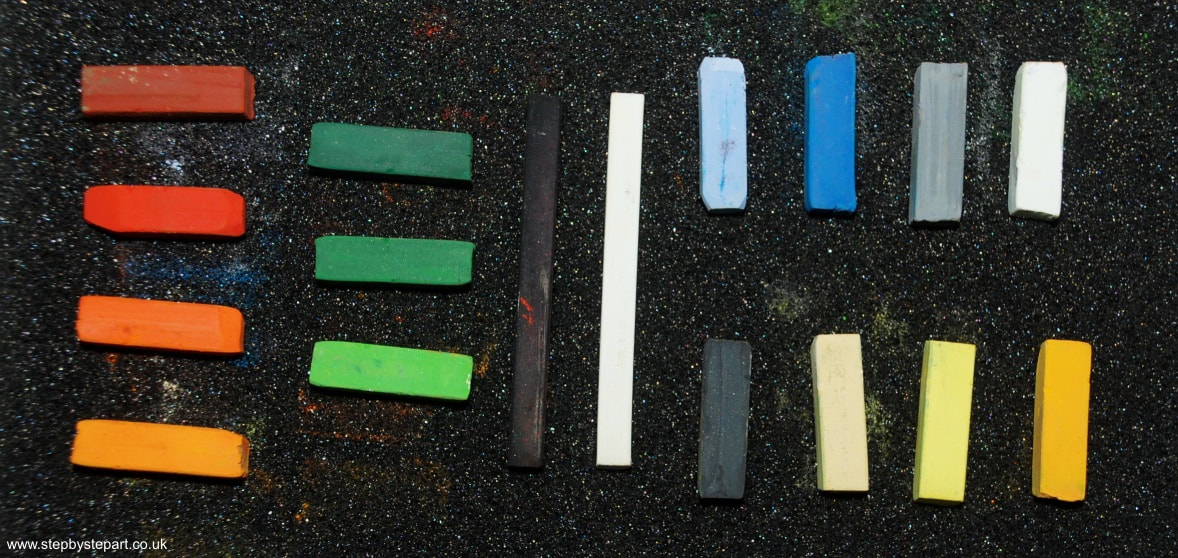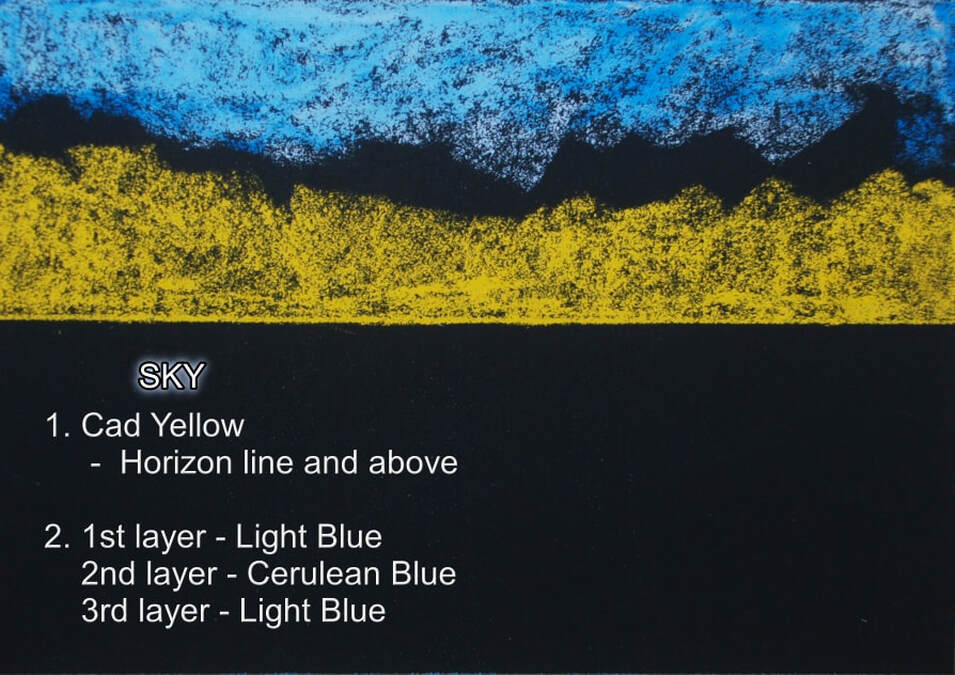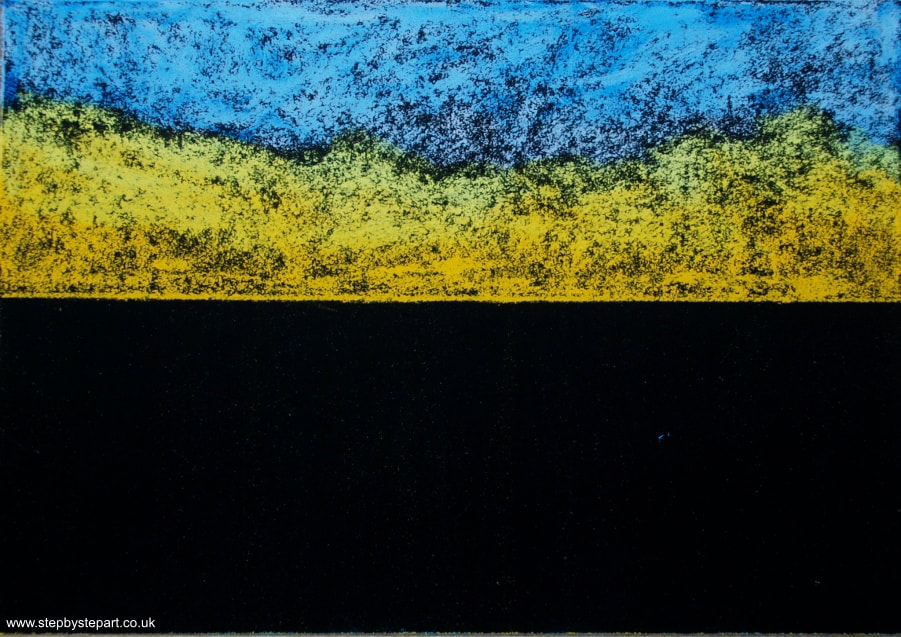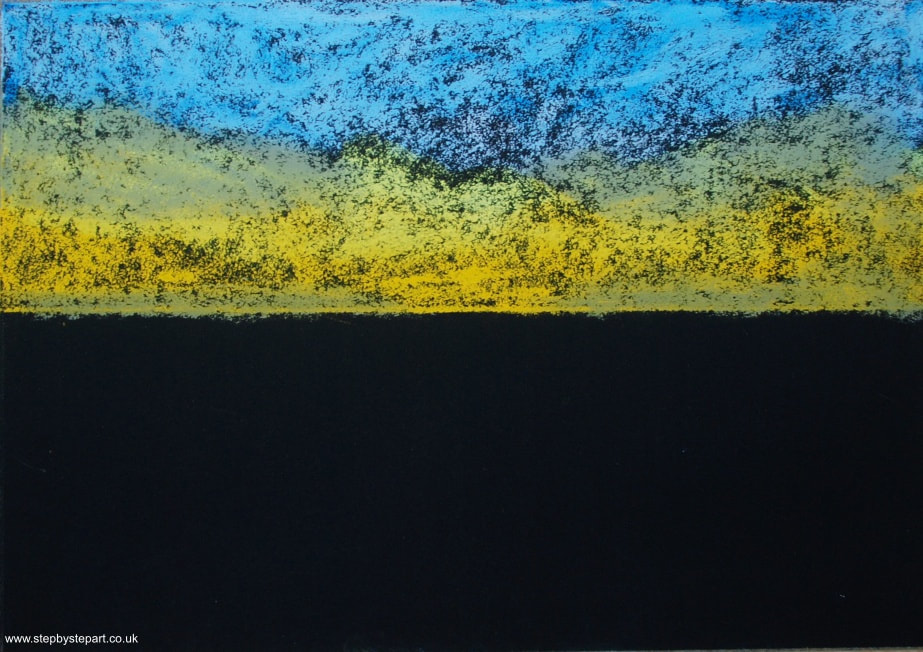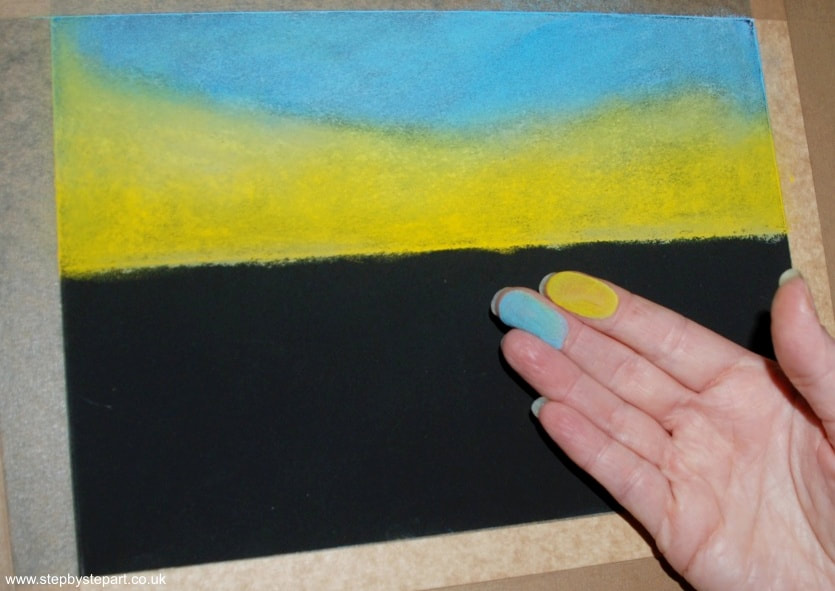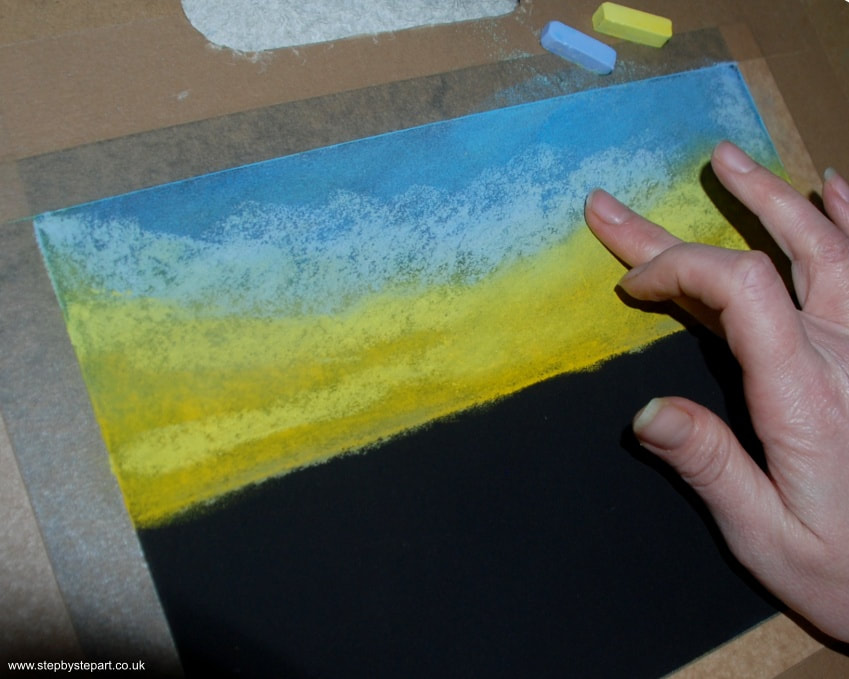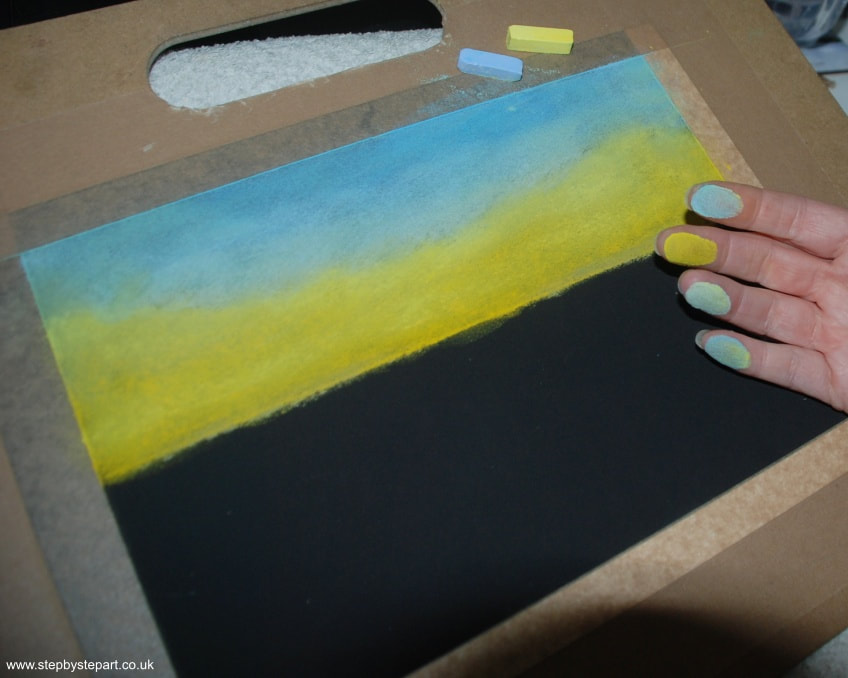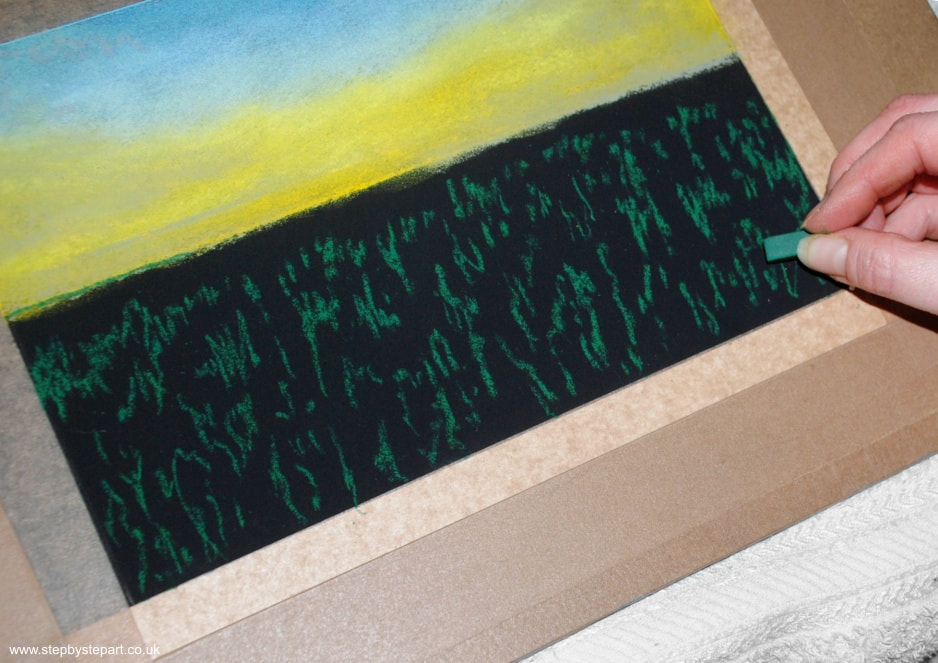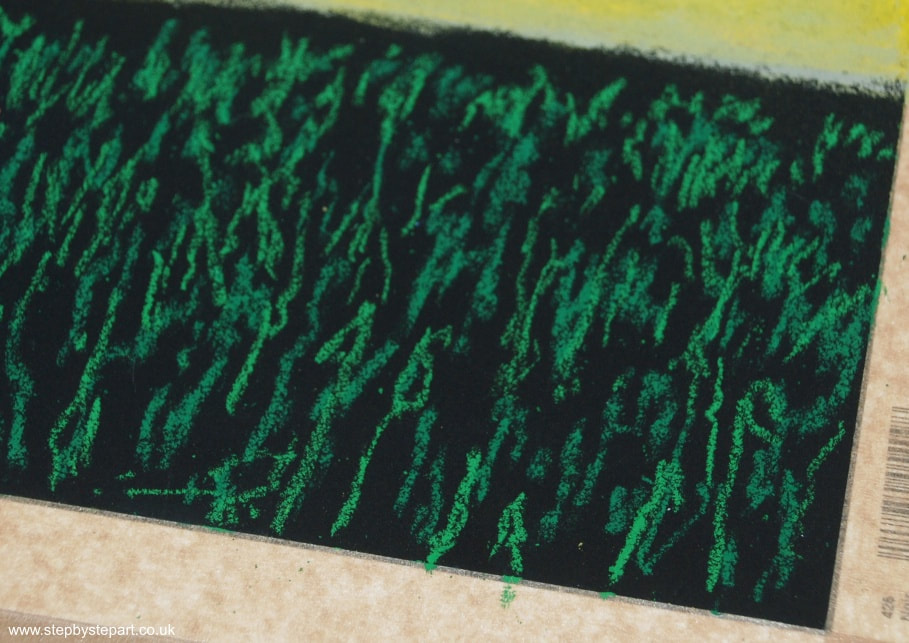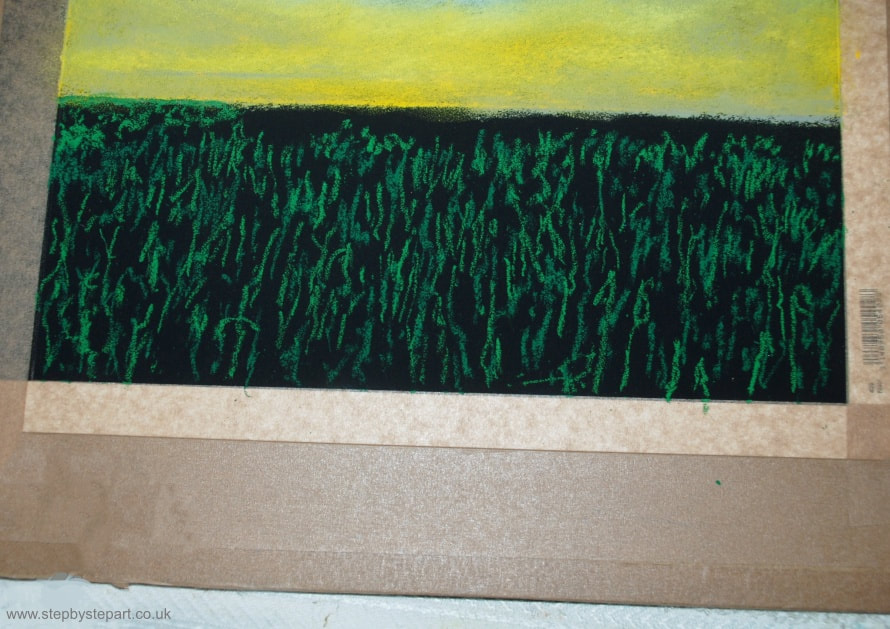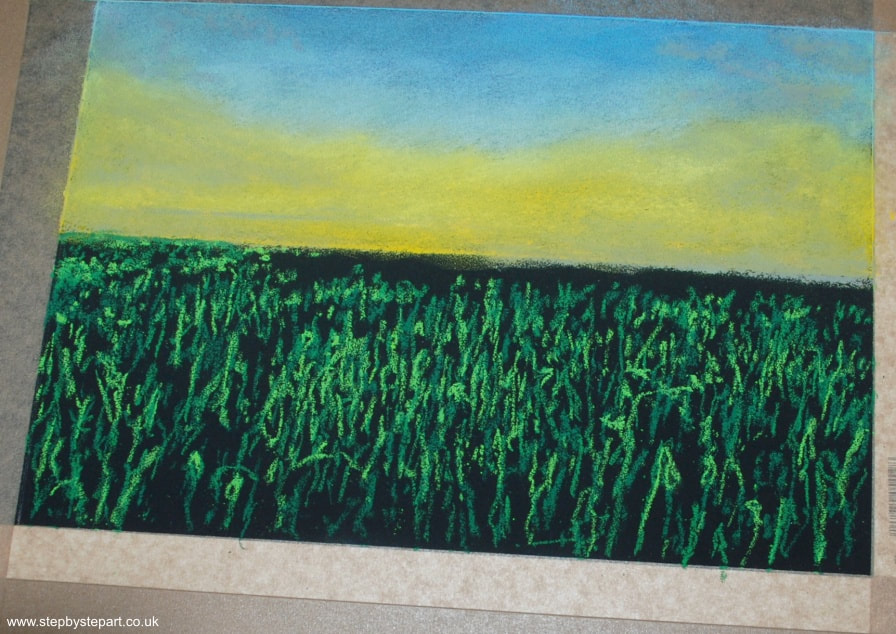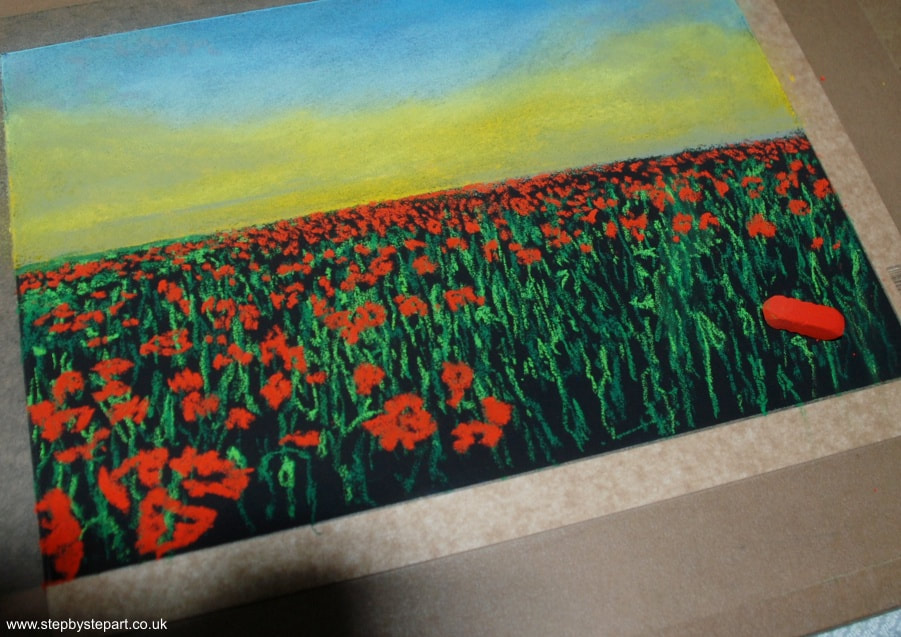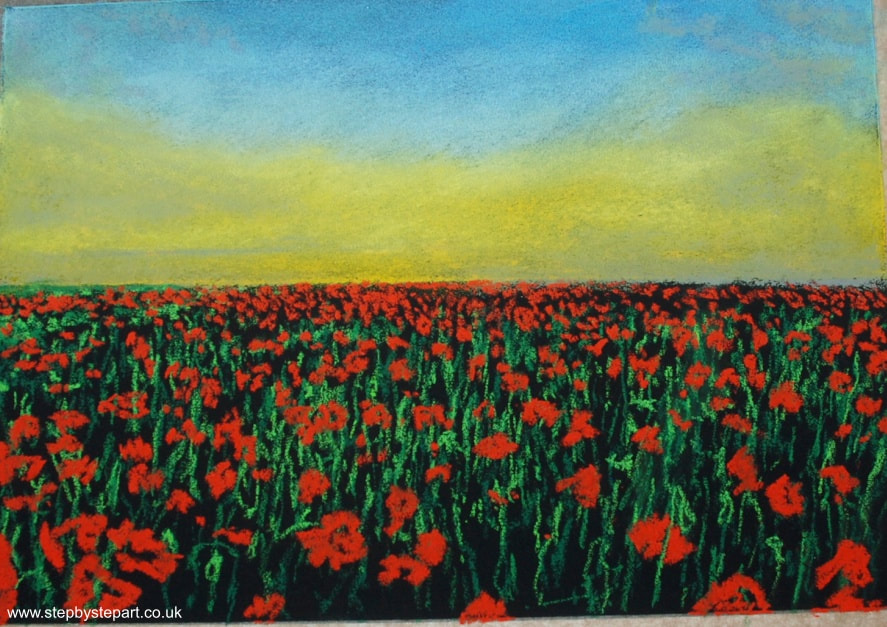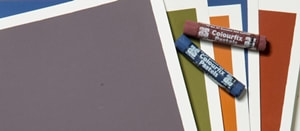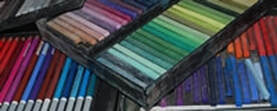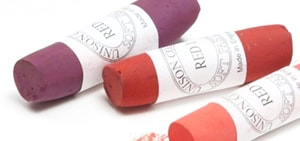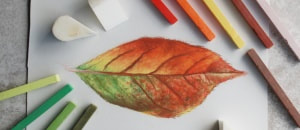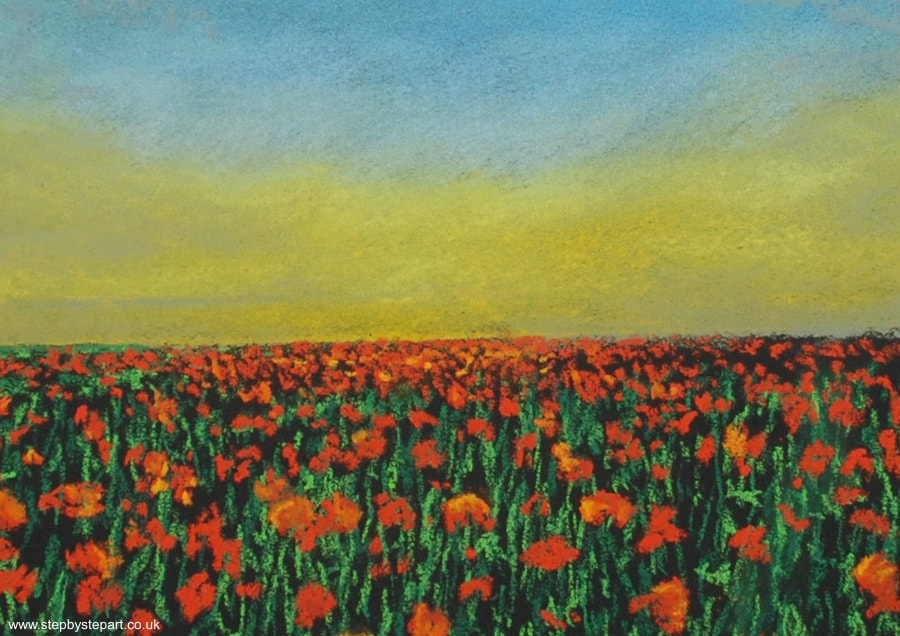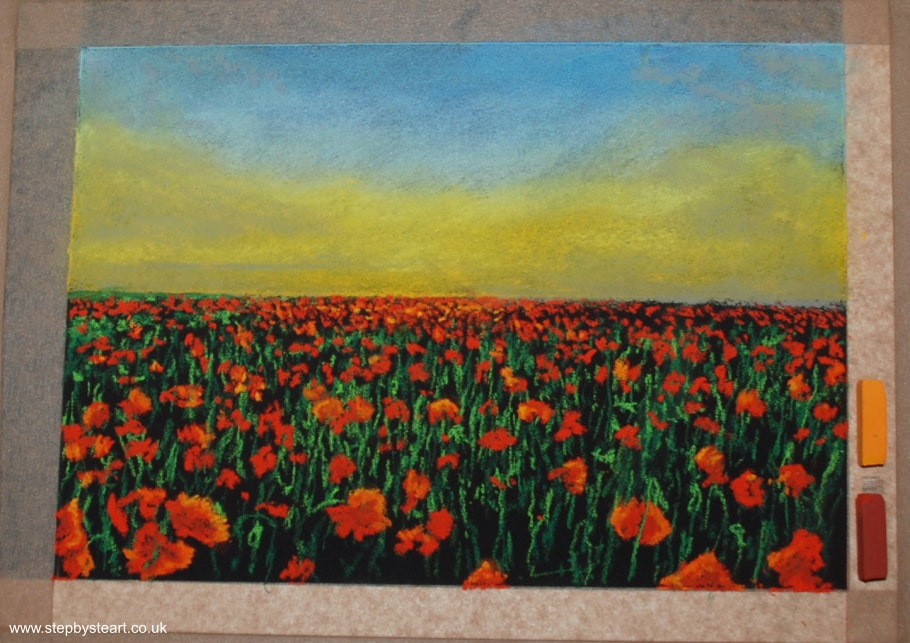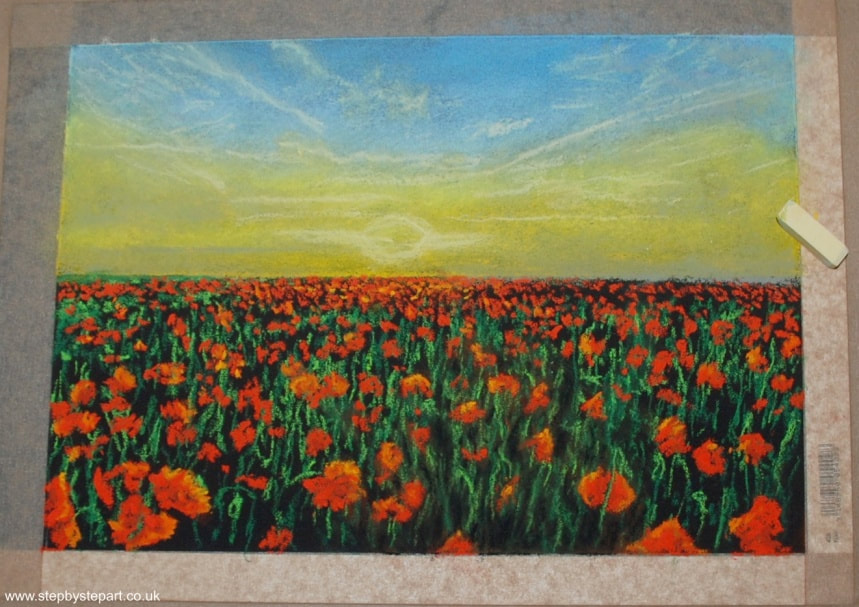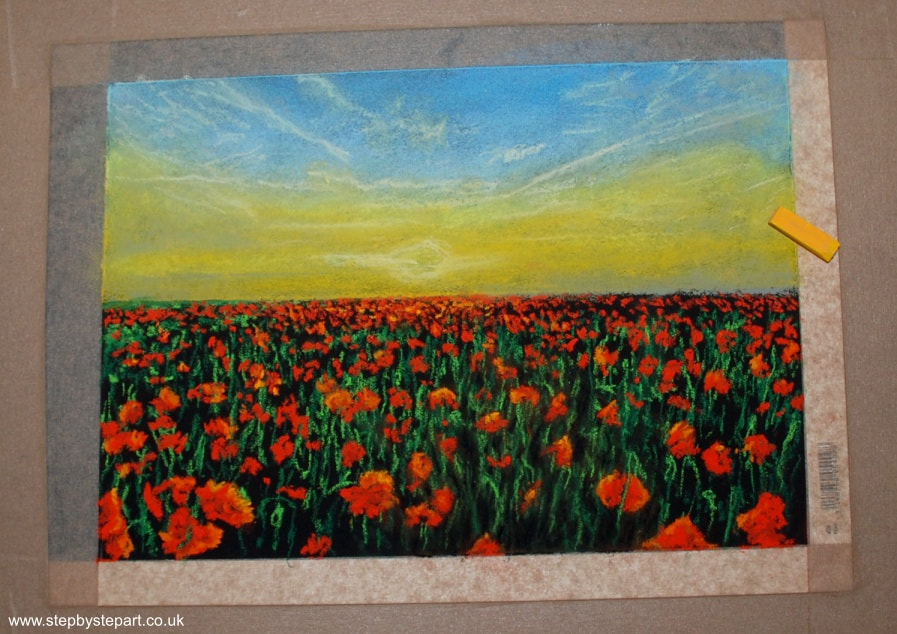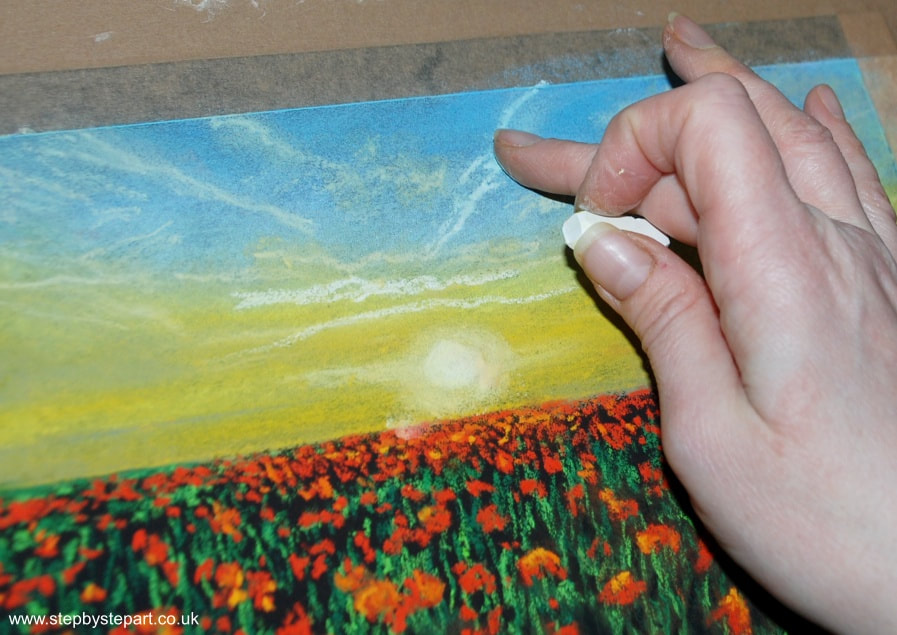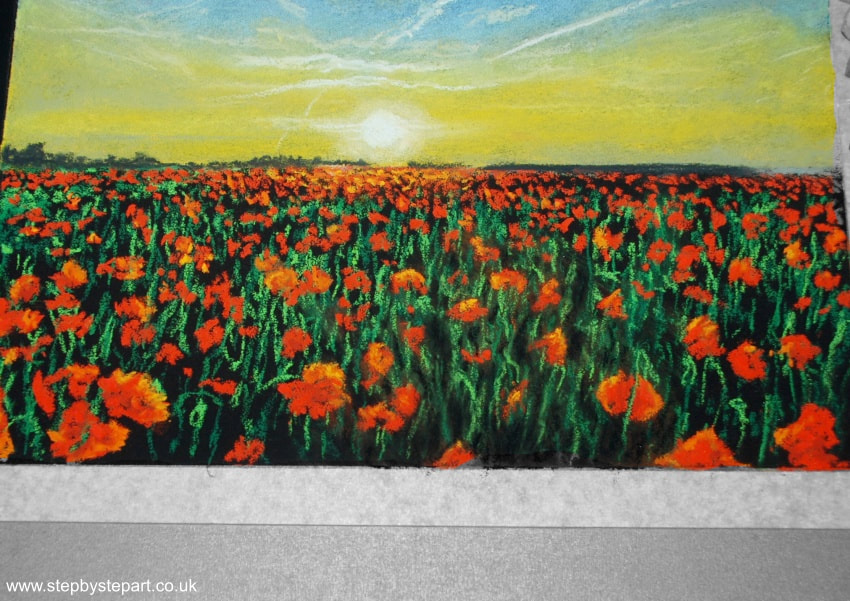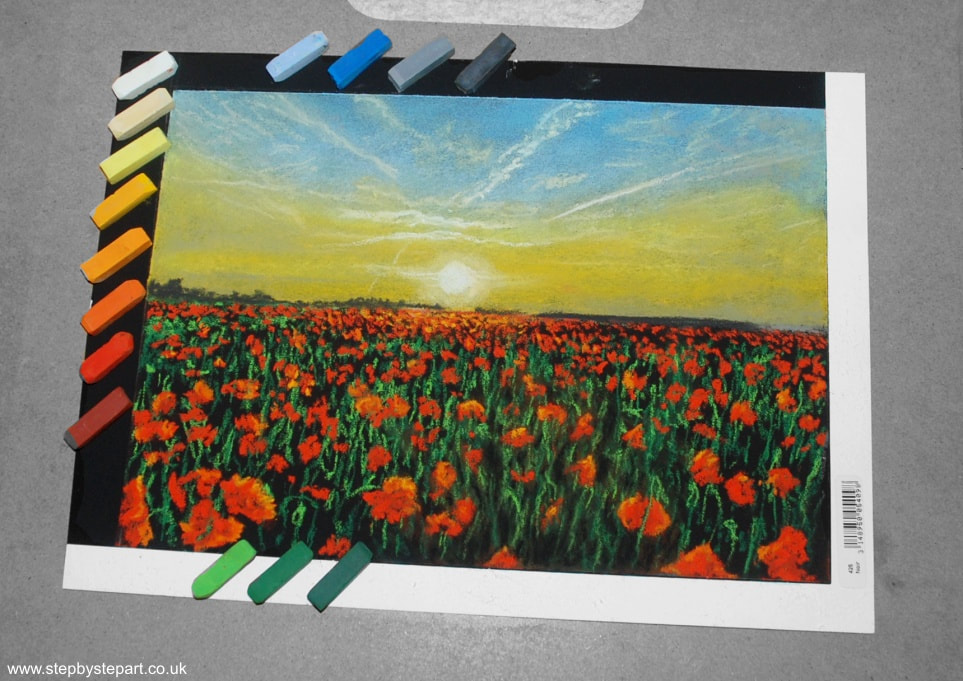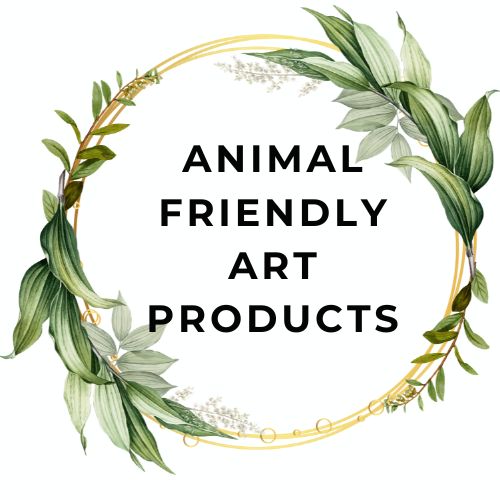POPPY FIELD
A tutorial for SOFT pastel artists
This is a tutorial created for the soft pastel artist. You may be a complete novice, unsure where to begin on your journey, or an intermediate looking for more knowledge. You may just wish to pass the time with a box of pastel and a cuppa simply because you like the composition. Wherever you are in the process, we encourage you to embellish as much as you want, or keep it as simple as we have.
Pastels are a quick and easy medium, making them ideal for the absolute beginner. We provide a simple breakdown of how to create an eye catching landscape of these sun-kissed poppies. We show you how to build the foundations and offer practical techniques. By providing both images with descriptions, we offer an easy to follow guide for any artist.
We hope you enjoy the process and feel free to share your piece with us so we can add it to a gallery on this page.
Pastels are a quick and easy medium, making them ideal for the absolute beginner. We provide a simple breakdown of how to create an eye catching landscape of these sun-kissed poppies. We show you how to build the foundations and offer practical techniques. By providing both images with descriptions, we offer an easy to follow guide for any artist.
We hope you enjoy the process and feel free to share your piece with us so we can add it to a gallery on this page.
The products you will need
We use the student grade 'Inscribe' soft pastels throughout this tutorial. They are the half stick size found in the 48 set. We chose the black surface from the Art Spectrum Colourfix range. Although it is favourable, your own products do not have to match, just be aware that different papers and pastels will produce a different outcome to ours. This will add further character. Select colours from your own palette that closely resemble the colours used in this tutorial and choose a dark, textured surface.
As pastels can be messy, we recommend that you have a damp cloth handy, as well as a clean, dry towel. This will allow you to wipe any excess dust from your fingers if you use your hands to blend. Ensure you dry them before mixing other colours. Always do this between blending, unless you are mixing similar colours together.
As pastels can be messy, we recommend that you have a damp cloth handy, as well as a clean, dry towel. This will allow you to wipe any excess dust from your fingers if you use your hands to blend. Ensure you dry them before mixing other colours. Always do this between blending, unless you are mixing similar colours together.
|
* Textured paper *Soft/Hard pastels
* Protective paper * Damp Hand cloth & Dry towel Optional: Blending sponge and ruler Vertical Divider
|
Paper Used: Art Spectrum Colourfix Black
Pastel range used: Inscribe |
|
Inscribe soft pastels are ideal for those new to this medium. They are also sold under the names Mungyo and Hashi. The box set used in this tutorial contain 48 colours. We use 15 hues, carefully selected from the set, allowing us to keep the composition rather loose.
|
A textured paper is ideal for pastels. Available options are pastel paper or an abrasive paper. A toothy paper grabs and holds pigment far easier, whilst still allowing you to blend smoothly. When covering large areas, use the side of the pastel and the hard edges for the fine detail.
|
The reference image
& colour chart
IMPORTANT TIPS:
* If working on an upright easel, start from the top and work down. Any pastel drop can be removed easily and will not 'damage' any applications previously applied below.
* Avoid contamination by wiping your pastels and pastel pencils on a clean tissue between applications. Useful to keep pale colours clean after having applied over dark ones.
* If you are working on a flat surface, pastels can be easily smudged by your hand. It is recommended that you keep a piece of clean paper beneath your working hand to avoid this. Glassine paper is the best option for this as it minimises any smudging accidents. Replace if/when it becomes too saturated.
* If you have full length pastels, you may prefer to break them in half. This also allows you to keep one side for fine lines and the other for applying base layers.
* To shape your pastel blocks, run the edge of your pastel over a sheet of fine sandpaper to create a thin edge for applying fine lines. This is highly recommended if you do not have pastel pencils when you need to create fine detail.
* If working on an upright easel, start from the top and work down. Any pastel drop can be removed easily and will not 'damage' any applications previously applied below.
* Avoid contamination by wiping your pastels and pastel pencils on a clean tissue between applications. Useful to keep pale colours clean after having applied over dark ones.
* If you are working on a flat surface, pastels can be easily smudged by your hand. It is recommended that you keep a piece of clean paper beneath your working hand to avoid this. Glassine paper is the best option for this as it minimises any smudging accidents. Replace if/when it becomes too saturated.
* If you have full length pastels, you may prefer to break them in half. This also allows you to keep one side for fine lines and the other for applying base layers.
* To shape your pastel blocks, run the edge of your pastel over a sheet of fine sandpaper to create a thin edge for applying fine lines. This is highly recommended if you do not have pastel pencils when you need to create fine detail.
IMPORTANT NOTE:
Soft pastels create dust so you may wish to wear a face mask whilst you work, which will protect you from inhaling dust particles. We highly recommend this for those who suffer with asthma or other respiratory issues. Soft pastels may not be suitable for everyone for this reason.
If you work with soft pastels on a regular basis, we recommend that you invest in a HEPA air filter. We have written an article for those who require more information on soft pastels as a medium. You can read it here.
Soft pastels create dust so you may wish to wear a face mask whilst you work, which will protect you from inhaling dust particles. We highly recommend this for those who suffer with asthma or other respiratory issues. Soft pastels may not be suitable for everyone for this reason.
If you work with soft pastels on a regular basis, we recommend that you invest in a HEPA air filter. We have written an article for those who require more information on soft pastels as a medium. You can read it here.
